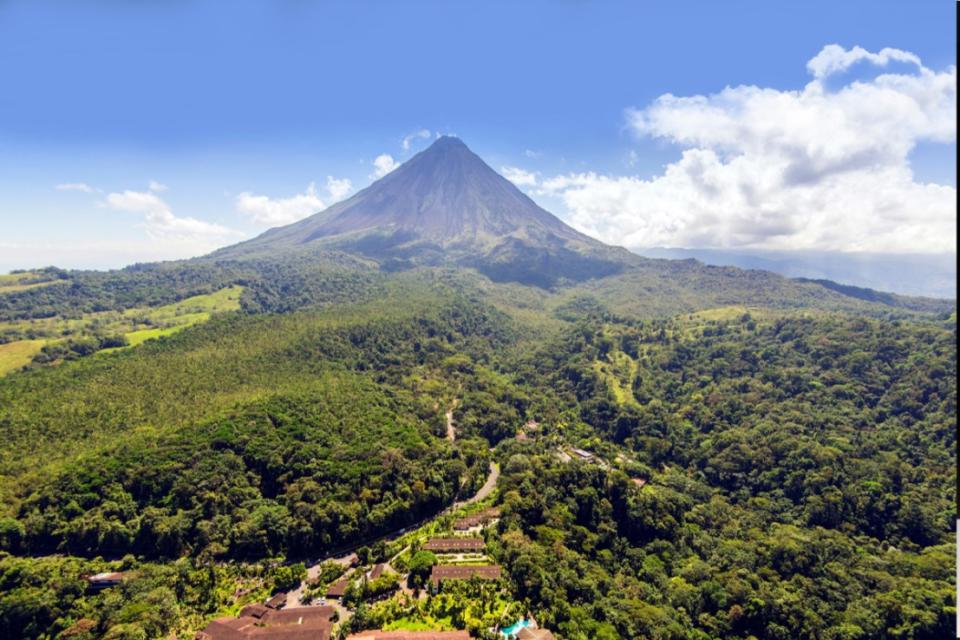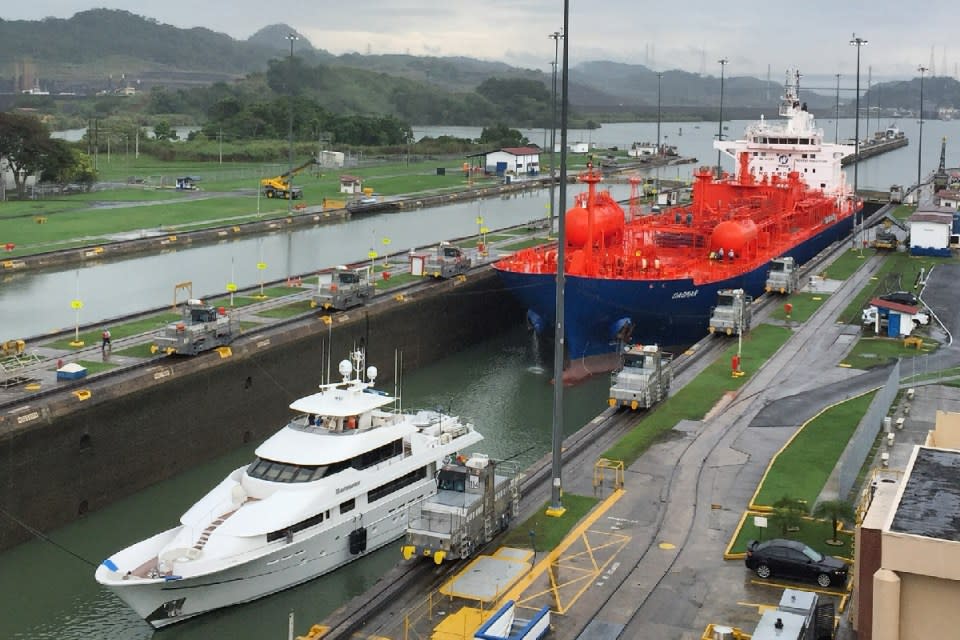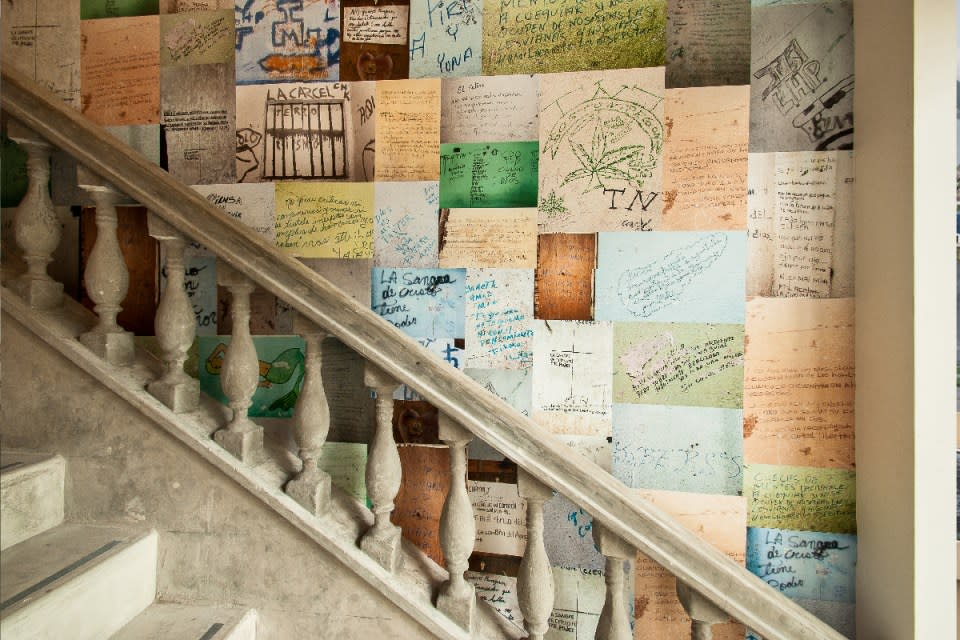Why Panama is an undiscovered wonder for nature lovers

I spot a cayman a couple of metres away on the umber riverbank. It is as still as a park bench, its jaws wide open. I’m not describing a Porsche Cayman with its bonnet up awaiting a recovery truck, I’m talking about a crocodile with a hungry look in its eyes. It surveys me with malintent.
I’m chuntering down the Gatun River in Panama’s Chagres National Park at walking pace aboard a cigar-shaped boat. The water’s so shallow that at one point my guide gets out to push. I’m not sure I’d risk my legs. We’re heading to lunch with an indigenous tribe who live on the banks. Barefoot, the Emberá women wear colourful dresses and the men loincloths which leave little to the imagination.
They live in stilted huts with thatched roofs, expertly carve wooden instruments and trinkets, and weave baskets and beads. They have an innate understanding of the land. The village elder, Aleppio, picks a plant called dormidera, which is used to aid sleep and reduce pain, and hands it to me. I didn’t realise I wasn’t meant to eat it. Suddenly my entire mouth goes numb, like I’ve been prepped by a dentist.
According to my guide, Hernan, NASA sent the Apollo 11 crew to this very jungle to learn survival skills from the Emberá before heading to the moon. I hope the advice included double-checking first if you should put space stuff in your cake-hole. They’ll have been well-fed prior to the mission, anyway, if my meal of tilapia river fish, fried in orange-red achiote spice and served in a plantain leaf, is anything to go by.
Gangs inhabited the building – as many as 20 rival gangs! – for the next 30 years. The hotel doesn’t whitewash this. It gives the place a bit of edge.
Spanish for ‘Old Quarter’, the Casco Viejo is Panama City’s buzzy and historic district and a UNESCO World Heritage Site. Jutting into Panama Bay, it’s a labyrinthine web of narrow dusty streets, neoclassical palm-lined squares, quirky churches and Spanish buildings, many of which were built in the 17th century. Having been a lawless ghetto just a decade ago, it’s undergoing a phenomenal renaissance that has attracted major real estate investment and an atmospheric cocktail, coffee and cooking scene.
The American Trade Hotel
I’m staying at the American Trade Hotel, overlooking the elegant Plaza Tomas Herrera, a cinematic stucco colonial haunt which was built in 1917 with high ceilings and mosaic floors, and has been chicly renovated with dark wooden furniture, panels and flooring constructed from trees that came down in Nicaragua’s Hurricane Felix or were salvaged from the Panama Canal.
Originally, this was an apartment building for the Panamanian elite but, like much of Casco Viejo, was abandoned in the 1970s. Gangs inhabited the building – as many as 20 rival gangs! – for the next 30 years. The hotel doesn’t whitewash this; images of graffiti the thugs left decorate the stone staircase walls. It gives the place a bit of edge.
The basement of the five-storey building contains an acclaimed jazz club, Danilo’s, named after Grammy-winning Panamanian pianist Danilo Perez, who used to play with Dizzy Gillespie. Sadly, it’s shut during my two-night stay, so I venture across the square to the Pedro Mandinga Rum Bar. The jazz isn’t live, but the vintage salsa vinyl collection is worth the visit as, of course, is the rum.

This is the flagship bar of the Pedro Mandinga brand (there’s one other, in Bogata), Panama’s first craft rum distillery, named in homage to Sir Francis Drake’s pathfinder around the dangerous Caribbean coast. The rum is distilled from raspadura, which is boiled down from the juice of hand-harvested cane, grown on a family-run farm in Chiriqui, which is where the massive reforestation is taking place in the west of the country bordering Costa Rica.
It turns out the owner Brad and I share a close mutual chum in Brooklyn. Brad, who emigrated here from New Mexico, was a chemist before becoming a craft beer brewer and master distiller. He is the ideal wingman for a late-night tour of Central American libations, and we finish a jet-lag-pounding evening at The Strangers Club, now sadly closed, although there are many like it still in business. This, when I close my eyes, is how I always imagined Panama; the punters – wearing the appropriate hats – are sat at the bar playing dominoes, the lights are dim and fans whirr overhead. It’s where you might find John le Carré’s tailor, Harry Pendel, meeting his handler. The drinks are as strong as a musket shot to the face.
The Panama Canal
The reason it was called Strangers, and the hotel is called the American Trade, is because of the ships that pass through here. If you come to Panama you must visit the canal. One of the seven wonders of the modern world, it cuts 51 miles from the north coast of Panama to the south, connecting the Atlantic Ocean to the Pacific at Central America’s narrowest point, and saving mariners at least three weeks of travel by avoiding the hazardous Cape Horn at the base of South America, or the even less popular Bering Strait that divides the United States and Russia. Twelve 34-metre wide locks lift vessels up and down a height of 26m. It’s mesmeric to watch, and very slow. The viewing platform is crammed with tourists jostling for the perfect selfie.
My proudest photo, though, was taken shortly after take-off to Costa Rica. From the air, one is able to capture two oceans in the same shot: forests, fields and the aeroplane’s wing separating the Atlantic from the Pacific.
Having done a passable impression of tropical bird life, I then went on a guided trek through the jungle, across hanging rope bridges that bring to mind Indiana Jones.
This was part two of my eco-lux adventure, with Costa Rica reputed to be the most eco-conscious country in the world. I flew into San José and drove three hours north along the winding mountain roads to the Tabacón resort, in the shadow of the Arenal volcano. It’s been dormant since 2010, which is not exactly bygone. In 1968, it erupted unexpectedly and violently, destroying the town below.
Arenal National Park is also one of the zip-lining capitals of the world, and boasts the most breathtaking views of both the volcano and the man-made hydroelectric Lake Arenal (which powers 12 per cent of Costa Rica). There are eight zip-lines between the canyons, 200m above the rainforest floor, each around a mile long, flying over and sometimes under the tree canopies.
Having done a passable impression of tropical bird life, I then went on a guided trek through the jungle, across hanging rope bridges that bring to mind Indiana Jones. My guide, Gabriella, points out the strangler fig tree, a parasitic nightmare which cuts off circulation to its neighbours’ roots and places its seed in their bark. We spot several tiny eyelash vipers, almost invisible on the green foliage, which despite their size will kill you stone dead in two hours.

There are 142 other species of snake within this jungle, 23 of which are venomous. Bullet ants and tarantula hawk wasps take first and second place, respectively, in the chart of things you least want to be stung by. Much cuter and friendlier is the kouati, a racoon-like creature with a long tail and bear-esque face, which puts on a show for us, scrambling along branches and jumping from tree to tree.
My accommodation is, like the American Trade Hotel, a member of Small Luxury Hotels of the World, and is utterly unique. The Tabacón Thermal Resort & Spa sits on 900 acres of lush primary and secondary rainforest and has sustainability, health and relaxation at its core. Nature comes into every experience it offers, not least its natural springs which are heated by the volcano. The temperatures range from between 25 and 50 degrees centigrade. There are waterfalls, cascading pools and hidden bathing spots surrounded by botanicals. There are so many pools you’re sure to find several with no one in them, and nobody will stop you taking a martini glass in to bathe, which is how I conduct all my ablutions.
What we have here is a five-star resort which blends seamlessly into the surrounding environment but doesn’t scrimp on the spoiling. With a hot waterfall at my feet and a cocktail in my hand, I think of Costa Rica’s motto: ‘Pura Vida’. Translation: ‘Life is great’.
• American Trade Hotel, Panama City and Tabacón Thermal Resort & Spa, Costa Rica are members of Small Luxury Hotels of the World; slh.com
• American Trade Hotel offers rooms starting from £236 per night. Tabacón Thermal Resort & Spa offers rooms starting from £320 per night
• KLM flies year-round to Panama City and seasonally to San Jose, Costa Rica from Heathrow via Amsterdam Schiphol; klm.co.uk